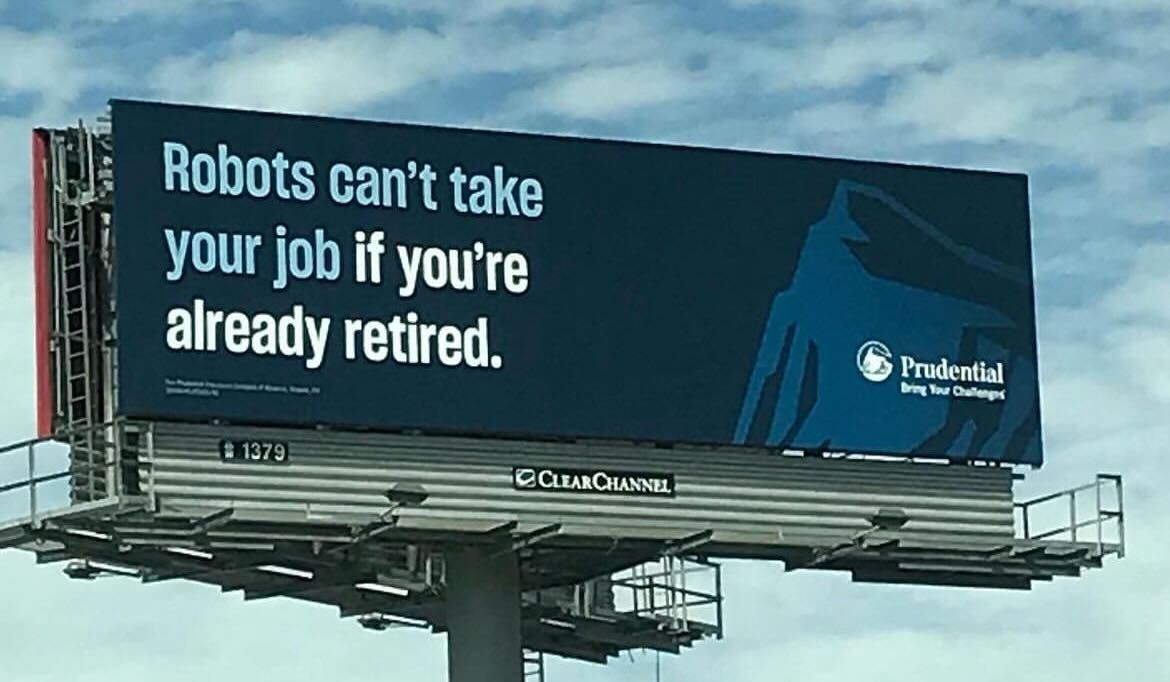The Growth Newsletter #141 Unfair Advantage, psycho-logic, and better annual pricing. |
Welcome all you growth-loving founders and marketers! Happy (slightly-belated) Thanksgiving for my fellow Canadians 🦃🦃. It's like American Thanksgiving just earlier and without BFCM sales and football. Anyway, topics for today: Unfair Advantage, psycho-logic, and better annual pricing. Let's dive in 🍭
– Neal |
Thanks to our sponsors for keeping this newsletter free for all of you! Check them out :) |
|
|
Brought to you by Positional. Google Analytics kinda sucks. Positional is launching a Content Analytics tool I’ve wanted for years. Here’s why: - It tells you exactly where in an article users are bouncing. Meaning:
-
You can strategically place CTAs before users bounce.
- You can update the content so users don’t bounce.
- You can optimize SEO, UX, and conversions simultaneously
- You can quickly see every article's bounce rate, time on site, AND scroll depth.
-
It takes seconds to set up. Just copy/paste a small script.
Sign up for the private beta → |
|
|
And by Vanta—compliance doesn’t have to be complicated.
In fact, with Vanta, it can be super simple. Trusted by over 5,000 companies, Vanta automates the pricey, time-consuming process of prepping for SOC 2, ISO 27001, HIPAA, and more.
Save up to 400 hours of compliance work and 85% of associated costs. And Vanta scales with your business, helping you successfully enter new markets, land bigger deals, and earn customer trust.
As a special offer, DC readers get $1,000 off Vanta. Claim your discount here. |
|
|
Want to be featured in front of 84,148 founders and marketers? Learn more here–booking into November. |
|
|
1. Find your Unfair Advantage
Insight from Unfair Advantage by Ash Ali and Hasan Kubba. Research done with Shortform. When you're starting a business, choosing a product, or even a topic for your personal content, you de-risk it by first identifying your unfair advantages.
A combination of unique assets and attributes that make you more likely to succeed. The 5 ways you can have an "unfair advantage" are:
#1. Valuable Assets Having money is an obvious unfair advantage. You can either fund your business, or at least work on it without stressing about paying rent. Most don't have this one, obviously. A great way to start a business without a lot of money is by doing consulting or running an agency (like we did with Bell Curve). #2. Knowledge and Education
95% of startup founders have a bachelor's degree or higher. 47% have a Master's or higher.
A degree can also be a disadvantage if you spent 4 years and $200,000 to get a degree that's not relevant to building a business.
But, in general, knowing more is better. So learn learn learn. #3. Location and Timing There's a billionaire who owns an island near me that made his money from working in telecommunications at the perfect time. He saw that mobile phones were coming and correctly predicted that telecom companies would need to place towers on top of a lot of random hills.
He quietly bought up a ton of these key properties. And then sold/leased them to telecom companies for insane amounts of money. Study trends. Predict what will be needed if the trend continues. #4. Interpersonal Skills
85% of financial success comes from the ability to communicate effectively. Only 15% comes from technical skills or knowledge.
Charisma can be learned: Give people your full attention. Work on projecting confidence. Genuinely care about others well-being. #5. Prestige and Social Connections
Prestige is people's interpretation of your skills and status. A product launched by Bill Gates or Elon Musk is more likely to succeed just because a lot of people know and trust them.
Social connections are both "who you know" (do you know a bunch of rich investors, influencers, or potential high value first customers?), as well as your friend circle. Are you surrounded by other motivated, successful people, or are you surrounded by people who laugh at your ambition?
Choose your circles wisely.
–––
Other examples of Unfair Advantages in the wild: -
Ali Abdaal was in Cambridge Medical School (a prestigious university) so had an unfair advantage making YouTube videos on how to get into medical school.
-
Lex Fridman was an PhD AI researcher at MIT when he started his podcast, giving him access to some of the top AI researchers—including Elon Musk.
-
Marc Andreessen went to the University of Illinois for computer science right after the US government dumped a ton of funding into specific universities for the development of the early Internet. Which then led to him creating Netscape.
-
And we have a big network of both founders and marketers, making it easy for us to launch a free matchmaking service for companies hiring agencies/freelancers.
Find your unfair advantage (or create one) and exploit it. |
|
|
2. Don't be logical, be psycho-logical
Insight from Rory Sutherland and Bell Curve. We decide with emotions. Logic is often what we use to convince ourselves that our emotional decision is the right one, or to justify a past emotional decision.
Rory Sutherland shares a prime example in his book Alchemy. One of his clients was sending out physical letters asking for donations. Like all good marketers they A/B tested several different variations to see which brought in the most money: -
Control. The regular letter asking for donations.
- Donation matching. They highlighted that the government would match their donations, effectively doubling the impact of their donation.
- Heavier paper. They put the letters on higher quality, thicker paper.
- Hand delivered. They highlighted that a volunteer hand-delivered to their door.
-
Horizontal opening. They used a special envelope that opened on the end, not on the typical long side of the envelope.
Variations 3 through 5 seem rather weird and extraneous to the whole point. And logically, the variation that highlighted the donation matching should do the best, right? You tell people that a $10 donation is actually $20, isn't that more motivating? Wrong. Variation #2 (donation matching) did worse than control. Variations 3 through 5 all beat the control, and the best was variation #5 (horizontal opening).
But if you asked those people why they donated, they'd probably say "it's a worthy cause, blah blah blah" and not "the weird envelope got my attention."
This is what Rory calls psycho-logical—logical in the context of human psychology.
An ad example We used this principle 6 years ago for a client of ours that sold powerful computers for machine learning/AI purposes. We made an ad variation that made no sense: |
You wouldn't assume sloppily adding dog ears and nose onto a $10,000+ work computer would make it more likely that someone would purchase it. Yet, this became one of their best-performing ads at the time.
It stopped the scroll and made them look a little closer. And no one else had done it. So be a little crazy with your ideas. |
|
|
3. A better way to price annual plans (and reverse engineer retention rates)
Insight from Daniel Layfield (Codecademy and Uber) Monthly: $49 Annual: $490
^ every startup product ever. It's simple, clean, and they save 17% by doing annual. And you guarantee 10 months of revenue and hopefully reduce churn. Win-win.
But, is it the right choice?
Probably not. You don't see this trends as often with established companies.
Daniel says the trick is to price your annual plan at slightly more than your average LTV for monthly users.
So, if your average monthly user stays around for 4 months ($49 each), price your annual plan at 5 months ($245).
Daniel did this at Codecademy, and claims it was their best tactic at increasing LTV and reducing churn.
Takeaway: Consider running this pricing experiment if your average monthly retention is less than 12 months. Another, counter-intuitivebenefit More mature companies have figured this out. Meaning you can estimate the average retention for mature software products. Examples that Daniel shares: - Netflix: Only offers monthly plans. Their average user likely stays around for over 12 months (guilty). Spotify is the same.
- Headspace: $12.99/mo vs $69.99/yr. Ratio of 5.39, so their monthly users likely stay around for ~4 months.
-
Calm: $14.99/mo vs $69.99/yr. Ratio of 4.67, so their monthly users likely stay around for ~3-4 months.
Build this into your competitor analysis process!
And check out Daniel's full write up here. |
|
|
News you can use: Program we recommend*: Ortto's Startup Program Grow your startup faster with an all-in-one marketing automation, customer data, and analytics platform.
Eligible startups get $10,000 in free credits for Ortto. Apply now.
Get all the tools startups need to scale their marketing, including: - Journey builder – engage with your audience wherever they are through email, SMS, and push notifications.
-
One-click integrations – automate actions to keep people & systems up-to-date, including Salesforce, Slack, and more.
- Customer data platform – integrate, unify, and segment your customer data across platforms.
- Reports & dashboards – understand & visualize your customer data.
-
Talk – AI-powered live chat and omnichannel inbox for 1-on-1 conversations.
Apply to Ortto's Startup Program today and get $10K in free credits, valid for 2 years.
*Sponsored by Ortto |
|
|
Want to be featured in front of 84,148 founders and marketers? Learn more here–booking into November. |
Something fun From Prudential. |
|
|
What did you think of this week's newsletter?
😍 Loved it | 😄 Great | 🙂 Good | 🤷♀️ Meh | 🤬 Bad
If you enjoyed this, please consider sharing it with a friend. These newsletters take hours to make each week, so it really helps when you share us with fellow founders and marketers.
And if you have any comments/question, I'd love to hear them. Just hit reply!
In case you're new: Who's Demand Curve?
We’re on a mission to help make it easier to start, build, and grow companies. We share high-quality, vetted, and actionable growth content as we learn it from the top 1% of founders and marketers. How we can help you grow: See you next week.
— Neal and Justin |
|
| © 2023 Demand Curve, Inc. All rights reserved. 4460 Redwood Hwy, Suite 16-535, San Rafael, California, United States
Unsubscribe from all emails, including the newsletter, or manage subscription preferences. |
|
|
|




